This Madagascar birding tour captures not only an exceptionally high proportion of the island's rich diversity of endemic birds, but also a wonderful variety of lemurs, ranging from the tiny and nocturnal mouse lemurs to the fabulous indri.
Madagascar encompasses a wide range of habitats. The massive escarpments of the east rise to over 2800 m above sea level and are exposed to the humid trade winds from the Indian Ocean, which cause high rainfall.
You will experience all these extremely different biotopes on this tour.
For most visitors, dLemurs are certainly a main attraction, but for birdwatchers, there are more than 120 endemic bird species to see, including six or seven endemic families, including the Mesitornithidae family, the Erdracken, Kurols (Leptosomus discolor) the Barneria Madagascariensis, Vangas, Couas and many others are of equal interest.
During our ultimate Madagascar birding tour, we will explore all the major habitats of the island.
This Malagasy bird watching tour starts and ends in Antananarivo. From the capital, which is located on the high plateau, we first drive to the Ankarafantsika National Park, which is located more than 400 km to the north.
Then we will go to the eastern rainforest in Andasibe and then in the opposite direction, to the dry west of Madagascar.
Accommodation and road transport: The hotels/lodges are mostly of good standard. There are some long drives.
Hiking: The hikes during our birding tours are mostly easy, they are always adapted to the level of the guests.
Bird/Mammal Photography: The bird tours are often accompanied by Pierre Koval who is an extremely good photographer.
Day 1 -Arrival in AntananarivoReception at the airport by your guide and your car. Transfer to the guest house "Villa Sibylle". Please note that the arrival is usually late in the evening. The proximity of the place allows you to save sleeping time to be fit the next day. |
Day 2 - Antananarivo to AnkarafantsikaAfter breakfast departure to Ankarafantsika National Park, located 450 km from the capital and a paradise for birdwatchers. We will also use the hours of driving and traveling to deepen the knowledge of the different camera settings. This park is home to 129 species of birds, 75 of which are endemic. One of the most renowned is the Madagascar Eagle (Haliaeetus vociferoides) which is also one of the rarest birds of prey in the world. We will arrive on site in the middle of the afternoon. After settling into the hotel, the "Blue Vanga", we will explore the park's surroundings before taking a night walk through the park. This is the opportunity par excellence to see a small nocturnal lemur, but also several species of chameleons and reptiles that are easier to spot at night. |
Day 3- Ankarafantsika National ParkThis day is entirely reserved for visiting this park.This primary dry forest is home to diurnal lemurs such as the sifaka Propithecus verreau xi coquereli or the brown maki and especially to many birds such as the hoopoe, the blue vanga and the chameleons. The morning is dedicated to their observation, followed by a short walk to the gorge to enjoy the fantastic view. Since the cliffs are the niches of the bee-eaters, we will be able to observe this bird and its sharp beak. We will have lunch at the entrance of the park. The afternoon is dedicated to a walk around a lake that hosts crocodile, ibis, herons and especially the osprey, the ankoay. Baobab trees with a height of 32 meters will also be on the site. Although the lake is home to crocodiles, fishermen do not hesitate to enter the water with their nets to bring back dinner. In the evening we will take a night walk in search of the microcele, a small nocturnal lemur that lives on the edge of the park. Return to the hotel and end the evening free. |
Day 4 - Ankarafantsika National ParkThe national park is a haven for lemurs and endemic birds. Eight species of lemurs have been observed in Ankarafantsika, including the famous Microcebus, the world's smallest primates.129 bird species nest in the Ankarafantsika forest, a birdwatcher's paradise. 75 of them are endemic, including the Madagascar Sea Eagle, the only diurnal raptor species classified as Critical (CR) in Africa by the IUCN in 2008. In terms of herpetofauna, the park is home to chameleons, iguanas, snakes, freshwater turtles and endemic crocodiles.Ankarafantsika National Park is a national park located in northwestern Madagascar, in the Boeny region. It consists of a mosaic of dense and dry forests. Ankarafantsika is known for its lakes, the last refuge for the most important species. The dominant ethnic group is the Sakalava people. |
Day 5-Return to AntananarivoReturn to the capital in a day for a night stopover before continuing towards the southwest. Several scenes of life and landscapes will be on our road and under our lens. The different bridges and rivers offer a variety of experiences. |
Day 6-Antananarivo to AntsirabeWe take the winding road through the bustling suburbs of Tana through the highlands before resting for lunch in Behenjy or Ambatolampy.Antsirabe is located 170km south of Antananarivo, this large city is an important economic center and famous for its pleasant high altitude climate and healing springs. Founded in the 19th century by Norwegian missionaries, Antsirabe looks much more "European" than other cities in Madagascar, as evidenced by the magnificent colonial mansions and regular buildings.In the garden of the hotel there are countless chameleons all hidden in the trees and some ray turtles that can often be seen on a small island in the middle of the lake.Overnight at the hotel "Chambres du Voyageur" . |
Day 7 - Antsirabe to KirindyAfter visiting and taking some photos of the town, we will head back to Miandrivazo. This town is located in the Menabe and is one of the hottest in Madagascar.Our next stop, the "Krindy Reserve", requires 8 hours of driving, 4 hours of which are on asphalt and one hour on dirt road. On the way there, we stop at the baobab avenue, which is rarely visited in the morning. This place, famous for its sunset, is not objectionable for photo amateurs during the day.In the late afternoon we visit the village next to the hotel. There are some baobab trees in the area, remnants of the forest of yesteryear. In the early evening we will visit the Kirindy forest for a night walk by the light of our lamps. We will try to cross mouse macaws, geckos and other animals in their natural habitat during this walk of about 2 hours. Return to the hotel for dinner. In the evening we will take advantage of the seclusion of the place to take night photos. |
Day 8- Kirindy ReserveIf you go into the forest early in the morning, Kirindy has the largest primate density in the world. It is also the best western reserve to see Madagascar's endemic dry forest species.Dominated by majestic baobabs (Andasonia grandidieri), the forest is home to the world's smallest known primate, as well as dozens of amphibian and reptile species.The Kirindy boats more than 60 bird species, possible endemic species include: Artamella viridis, Chabert Vanga, Leptosomus discolor, Agapornis canus , Caprimulgus madagascariensis and Falco zoniventris.The dry forest adjacent to both sides of the sandy road hosts interesting birds such as Coua gigas and Coua coquereli (both most easily seen in the forest station area), Mesitornis variegatus the Falculea palliata and Calicalicus rufocarpalis, the two Vasa parrots, Turnix varius and Otus madagascariensis and Athene superciliaris.In addition to an amazing variety of unique flora, Kirindy Forest is home to 8 species of lemurs, a variety of tenrecs species, the narrow-striped mongoose, the giant springer rat and the fossa.Overnight in the same bungalow. |
Day 9 - Kirindy to TsangajolyAfter breakfast at dawn, we depart for the Saline Lodge, 60 km from Kirindy and a 1.30 hour drive.After settling in and lunch at the hotel, we take a canoe-kayak trip in the mangroves of Tsangajoly. This lodge is a bird paradise that has become a haven for 134 species of birds, 40 of which are endemic to the country.Green Heron, Humblot Heron, white stilts, are the inhabitants of the place, prepare the binoculars. After our walk, we will land next to a salt works. We will make the visit, and you can even participate in the harvesting of the fleur de sel.This essential part of our daily life will no longer have secrets for you. At the beginning of the evening we will walk 10 minutes from the restaurant to a forest where the mouse macaws ,small nocturnal lemurs weighing 25 grams.Later evening free and dinner at the Lodge de la Saline. |
Day 10 - Tsangajoly Birds sanctuaryThis morning we wake up before dawn to sit at a table set up near the baoabs and enjoy the sunrise over the plains of Menabe.You just have to listen and take the binoculars to realize that we are not alone. Grey-headed parakeets, Newtonia brunneicauda, Falco newtoni , both species of Vasa parrot, Coua Cristata and many others will enjoy the show.After this early breakfast we will reach the west coast by boat in the Tsiribihina delta and visit a Vezo village, a nomadic people who live by the sea.We will have a picnic lunch on the beach before returning to the lodge to pick up the car and go bird watching at sunset. We will stay a few moments after sunset to photograph the sand plains under the stars.Return to the lodge at the beginning of the night and end of the evening free. |
Day 11 - Tsangajoly - Baobab Alley-MorondavaThe Lodge of La Saline has several ornithological trails.On these you can observe the Humblot's heron, the widowed dendrocygne, the teal and flamingos.Also yellow-billed kites , green-backed herons, white egrets, gray herons and white stilts will be scattered on your walks.The facility also has a swimming pool, a pool table and other amenities to relax a little and breathe between two walks. In the middle of the afternoon we will go to Morondava, places we will reach after 2h30 drive.We will see the sunset at the mythical avenue of baobabs. Also here we will stay a few moments after the sunset to immortalize the place under the stars.We will be back on the road for 30 minutes and then arrive at Kimony Resort. |
Day 12- Morondava to AntananarivoA peaceful rest day in the town of Morondava before the afternoon flight to Tana. Later evening free and dinner at Villa Sibylle. |
Day 13- Antsirabe to AndasibeAfter breakfast, departure on the RN2 that connects Tana with Tamatave, heading east to Andasibe National Park.To do this, we must cross Antananarivo, an anthill in the open air. A few kilometers from the exit of the city, the landscapes will already change.First, the eucalyptus forests for charcoal, which will give way to a forest increasingly green and lush. We will arrive at our destination for lunch.Before dinner we will take a night walk through the park to look for chameleons, insects, reptiles, but especially the mouse lemur, a small nocturnal lemur that weighs about 25 grams and is spotted thanks to its eyes that reflect the light of flashlights. Return to the hotel Eulophiella Lodge and dinner. |
Day 14-Andasibe / Mitsinjo National ParkAfter breakfast we will head towards Andasibe National Park for bird watching. We will stop at the Mangoro River where we will look for the Madagascar Pratincole. Afterwards, we will keep an eye out for the following birds in Mitsinjo Reserve: Red-breasted Coua, Collared Nightjar and Crested Coua.We will also look for Indri, the largest lemurs of Madagascar, also found in this forest. Before dinner, we will take a guided night walk to look for Long-eared Owl, Madagascar Scops Owl, Goodman's Mouse Lemur, Pygmy Lemur and Eastern Woolly Lemur. Various species of chameleon and tree frog can also be seen.Night walks in the rainforest are possible from the lodge.Overnight at the hotel " Eulophiella Lodge ". |
Day 15-Andasibe to AntananarivoIn the morning there would be another area of Andasibe N.P. to explore but you can also already drive comfortably in the direction of Antananarivo. On the way there are still some possibilities to visit which will be proposed depending on the interest of the participants on the spot.Overnight stay in the "Villa Sibylle". |
Day 16-Antananarivo and SurroundingsOn the last day of your exciting journey through Madagascar the capital of the island state is once again on the program: In Antananarivo, you will have numerous opportunities to go on Discovery tour To finish the birding, on the way to the Tsarasaotra Private Park in Antananarivo itself and the visit to this Ramsar site, which is a refuge and breeding ground for freshwater birds in general, other bird species, endemic and endangered bird species could be seen.For this day we have a Day Use in the Villa Sybille so that you can store your luggage there and freshen up in the evening, if necessary, before we take you to the airport. |
Day 17-The Return flight to EuropeThe last day of your 17 days vacation in Madagascar is entirely devoted to the return journey. This day you will on the plane to Europe and presumably learn about the different experiences and impressions of their Journey through Madagascar dream |
List of Bird species in AndasibeAccipiter francesii, Accipiter henstii, Accipiter madagascarriensis, Acridorheres tristis, Acrcephalus newtoni, Alcedo vintsioides, Alectroenas madagascariensis, Anas meleri, Apus melba, Ardea humbloti, Ardea purpurea, Ardeola idea, Ardeola ralloides, Asio madagascariensis, Atelornis crossleyi, Atelornis pittoides, Aviceda madagascariensis, Brachypteracias leptosomus, Bubulcus ibis, Buteo brachypterus, Butorides striatus, Calicalius madagascariensis, Canirallus, Caprimulgus enarratus, Caprimulgus madagascariensis, Casmerodius Albus, Centrpus toulou, Cisticola cherina, Copsychus albospecularis, Coracina cinerea, Coracopsis nigra, Coracopsis vasa, Corvus albus, Coua Caerulea, Coua cristata, Coua reynaudi, Cuculus rochii, Cyanolanius madagascariensis, Cypsiurus parvus, Dicrurus forficatus, Dromaeocercus brunneus, Dryolimnas cuvieri, Euryceros prevostii, Eurystomus glaucurus, Eutriorchis astur, Falco concolor, Falco eleonorae, Falco newton, Falco zoniventris, Foudia madagascariensis, Foudia omissa, Gallinago macrodactyla, Gallinula chlorupus, Glareola ocularis, Hartertula flavoviridis, Hartlaubius auratus, Hypossita Corallirostris, Hypsipetes madagascariensis, Ispidina madagascariensis, Leptopterus chabert, Leptopterus virdis, Leptosomus Discolor, Lonchura nana, Lophotibis cristata, Margaropedrix madagascariensis, Merops superciliosus, Mesitornis unicolor, Milvus Migrans, Motacilla flaviventris, Mystacornis crossleyi, Nectarinia notata, Nectarinia souimanga, Neodrepanis coruscans, Neodrepanis hypoxanthus, Neomixis striatigula, Neomixis tenella, Neoximis viridis, Nesillas typica, Newtonia amphishroa, Newtonia brunneicauda, Numida meleagris, Otis rutilus, Oxylabes madagascariensis inexpectatus, Phalacrocorax africanus, Phedina borbonica, Philepitta castanea, Phyllastrephus madagascariensis, Phyllastrephus tenebrosus, Phyllastrephus zosterops, Ploceus nelicouvri, Polyboroides radiates, Pseudopias wardi, Pseudocossyphus Sharpei, Randia pseudozosterops, Riparia paludicola, Sarothura insularis, Sarothrura watersi, Saxicola torquata, Schetba rufa, Scopus umbretta, Streptopelia picturata, Tachybaptus pelzelnii, Terpsiphone mutate, Trenon Australia, Tylas eduardi, Tyto alba, Tyto soumagnei, Vanga curvirostris, Xenopirostris polleni, Zoonavena grandidieri, Zosterops maderaspatana |
List of Bird species in AnkarafantsikaAnatidae : Nettapus auritus, Podicipedidae : Tachybaptus pelzelnii, Mesitornithidae : Mesitornis variegatus, Columbidae: Nesoenas picturatus, Oena capensis, Caprimulgidae : Caprimulgus, madagascariensis, Cuculidae : Coua coquereli, Coua ruficeps, Coua cristata, Centropus toulou, Cuculus rochii, Rallidae : Mentocrex kioloides, Dryolimnas cuvieri, Porphyrio alleni, Threskiornithidae : Plegadis falcinellus, Lophotibis cristata, Ardeidae : Butorides striata, Ardeola ralloides, Ardeola idae, Bubulcus ibis, Ardea humbloti, Ardea purpurea, Ardea alba, Egretta ardesiaca, Egretta gularis, Anhingidae : Anhinga rufa, Charadriidae : Charadrius bifrontatus, Jacanidae : Actophilornis albinucha, Turnicidae: Turnix nigricollis, Tytonidae: Tyto alba, Strigidae: Athena superciliaris, Otus rutilus, Accipitridae: Polyboroides radiatus, Accipiter francesiae, Haliaeetus vociferoides, Buteo brachypterus, Leptosomidae : Leptosomus discolor, Upupidae:Upupa marginata, Meropidae: Merops superciliosus, Coraciidae: Eurystomus glaucurus, Alcedinidae: Corythornis madagascariensis, Corythornis vintsioides, Falconidae: Falco newtoni, Falco zoniventris, Falco peregrinus, Psittacidae : Coracopsis vasa, Coracopsis nigra, Agapornis canus, Philepittidae: Philepitta castanea, Philepitta schlegeli, Campephagidae: Ceblepyris cinereus, Vangidae: Newtonia brunneicauda, Newtonia brunneicauda, Cyanolanius madagascarinus, Vanga curvirostris, Schetba rufa, Xenopirostris damii, Falculea palliata, Artamella viridis, Dicruridae : Dicrurus forficatus, Monarchidae: Terpsiphone mutata, Alaudidae: Eremopterix hova, Cisticolidae: Neomixis tenella, Cisticola cherina, Acrocephalidae: Acrocephalus newtoni, Bernieridae: Bernieria madagascariensis, Hirundinidae: Phedina borbonica, Pycnonotidae: Hypsipetes madagascariensis, Zosteropidae: Zosterops maderaspatanus, Muscicapidae: Copsychus pica, Copsychus albospecularis, Saxicola torquatus, Nectariniidae: Cinnyris notatus, Cinnyris sovimanga , Ploceidae : Ploceus sakalava, Estrildidae : Lepidopygia nana, Motacillidae : Motacilla flaviventris |
Day 1 -Arrival in AntananarivoReception at the airport by your guide and your car. Transfer to the guest house "Villa Sibylle". Please note that the arrival is usually late in the evening. The proximity of the place allows you to save sleeping time to be fit the next day. |
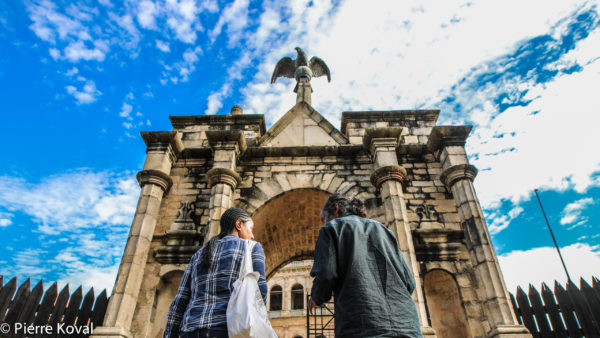 |
Day 2 - Antananarivo to AnkarafantsikaAfter breakfast departure to Ankarafantsika National Park, located 450 km from the capital and a paradise for birdwatchers. We will also use the hours of driving and traveling to deepen the knowledge of the different camera settings. This park is home to 129 species of birds, 75 of which are endemic. One of the most renowned is the Madagascar Eagle (Haliaeetus vociferoides) which is also one of the rarest birds of prey in the world. We will arrive on site in the middle of the afternoon. After settling into the hotel, the "Blue Vanga", we will explore the park's surroundings before taking a night walk through the park. This is the opportunity par excellence to see a small nocturnal lemur, but also several species of chameleons and reptiles that are easier to spot at night. |
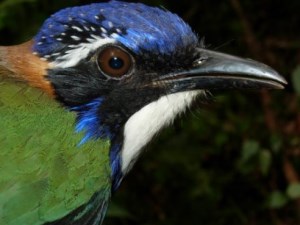 |
Day 3- Ankarafantsika National ParkThis day is entirely reserved for visiting this park.This primary dry forest is home to diurnal lemurs such as the sifaka Propithecus verreau xi coquereli or the brown maki and especially to many birds such as the hoopoe, the blue vanga and the chameleons. The morning is dedicated to their observation, followed by a short walk to the gorge to enjoy the fantastic view. Since the cliffs are the niches of the bee-eaters, we will be able to observe this bird and its sharp beak. We will have lunch at the entrance of the park. The afternoon is dedicated to a walk around a lake that hosts crocodile, ibis, herons and especially the osprey, the ankoay. Baobab trees with a height of 32 meters will also be on the site. Although the lake is home to crocodiles, fishermen do not hesitate to enter the water with their nets to bring back dinner. In the evening we will take a night walk in search of the microcele, a small nocturnal lemur that lives on the edge of the park. Return to the hotel and end the evening free. |
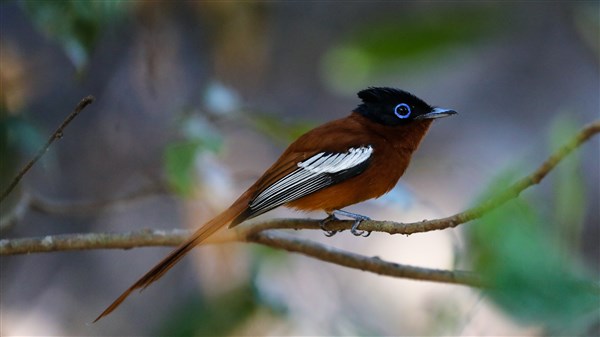 |
Day 4 - Ankarafantsika National ParkThe national park is a haven for lemurs and endemic birds. Eight species of lemurs have been observed in Ankarafantsika, including the famous Microcebus, the world's smallest primates.129 bird species nest in the Ankarafantsika forest, a birdwatcher's paradise. 75 of them are endemic, including the Madagascar Sea Eagle, the only diurnal raptor species classified as Critical (CR) in Africa by the IUCN in 2008. In terms of herpetofauna, the park is home to chameleons, iguanas, snakes, freshwater turtles and endemic crocodiles.Ankarafantsika National Park is a national park located in northwestern Madagascar, in the Boeny region. It consists of a mosaic of dense and dry forests. Ankarafantsika is known for its lakes, the last refuge for the most important species. The dominant ethnic group is the Sakalava people. |
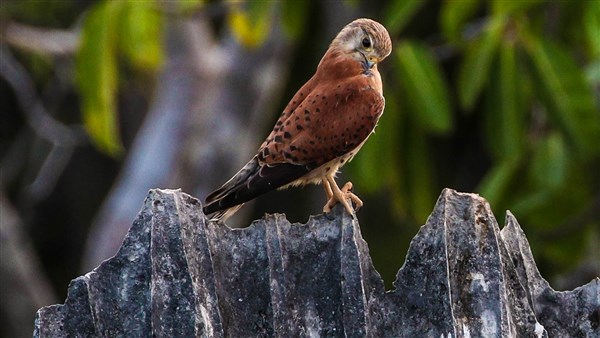 |
Day 5-Return to AntananarivoReturn to the capital in a day for a night stopover before continuing towards the southwest. Several scenes of life and landscapes will be on our road and under our lens. The different bridges and rivers offer a variety of experiences. |
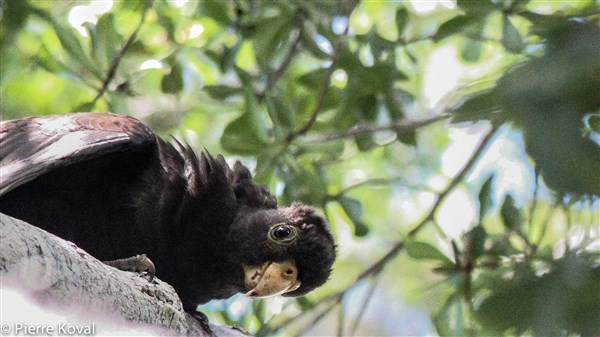 |
Day 6-Antananarivo to AntsirabeWe take the winding road through the bustling suburbs of Tana through the highlands before resting for lunch in Behenjy or Ambatolampy.Antsirabe is located 170km south of Antananarivo, this large city is an important economic center and famous for its pleasant high altitude climate and healing springs. Founded in the 19th century by Norwegian missionaries, Antsirabe looks much more "European" than other cities in Madagascar, as evidenced by the magnificent colonial mansions and regular buildings.In the garden of the hotel there are countless chameleons all hidden in the trees and some ray turtles that can often be seen on a small island in the middle of the lake.Overnight at the hotel "Chambres du Voyageur" . |
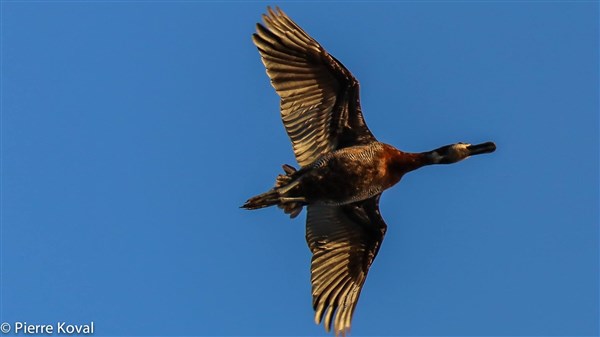 |
Day 7 - Antsirabe to KirindyAfter visiting and taking some photos of the town, we will head back to Miandrivazo. This town is located in the Menabe and is one of the hottest in Madagascar.Our next stop, the "Krindy Reserve", requires 8 hours of driving, 4 hours of which are on asphalt and one hour on dirt road. On the way there, we stop at the baobab avenue, which is rarely visited in the morning. This place, famous for its sunset, is not objectionable for photo amateurs during the day.In the late afternoon we visit the village next to the hotel. There are some baobab trees in the area, remnants of the forest of yesteryear. In the early evening we will visit the Kirindy forest for a night walk by the light of our lamps. We will try to cross mouse macaws, geckos and other animals in their natural habitat during this walk of about 2 hours. Return to the hotel for dinner. In the evening we will take advantage of the seclusion of the place to take night photos. |
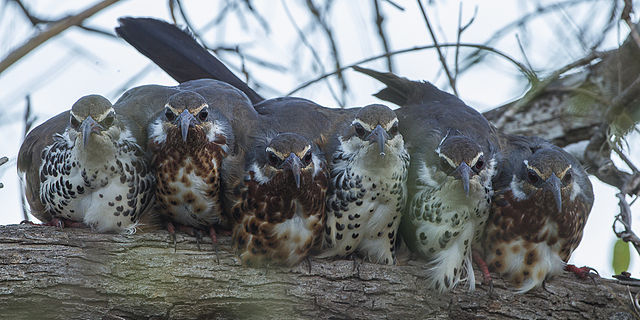 |
Day 8- Kirindy ReserveIf you go into the forest early in the morning, Kirindy has the largest primate density in the world. It is also the best western reserve to see Madagascar's endemic dry forest species.Dominated by majestic baobabs (Andasonia grandidieri), the forest is home to the world's smallest known primate, as well as dozens of amphibian and reptile species.The Kirindy boats more than 60 bird species, possible endemic species include: Artamella viridis, Chabert Vanga, Leptosomus discolor, Agapornis canus , Caprimulgus madagascariensis and Falco zoniventris.The dry forest adjacent to both sides of the sandy road hosts interesting birds such as Coua gigas and Coua coquereli (both most easily seen in the forest station area), Mesitornis variegatus the Falculea palliata and Calicalicus rufocarpalis, the two Vasa parrots, Turnix varius and Otus madagascariensis and Athene superciliaris.In addition to an amazing variety of unique flora, Kirindy Forest is home to 8 species of lemurs, a variety of tenrecs species, the narrow-striped mongoose, the giant springer rat and the fossa.Overnight in the same bungalow. |
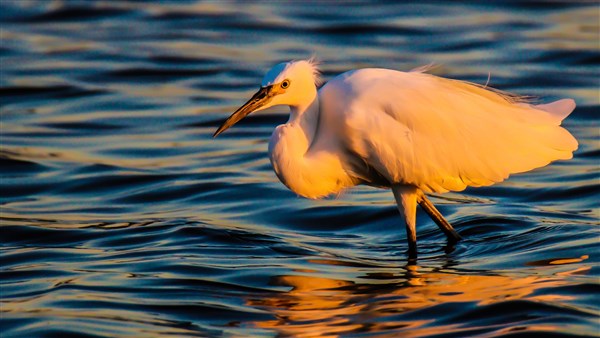 |
Day 9 - Kirindy to TsangajolyAfter breakfast at dawn, we depart for the Saline Lodge, 60 km from Kirindy and a 1.30 hour drive.After settling in and lunch at the hotel, we take a canoe-kayak trip in the mangroves of Tsangajoly. This lodge is a bird paradise that has become a haven for 134 species of birds, 40 of which are endemic to the country.Green Heron, Humblot Heron, white stilts, are the inhabitants of the place, prepare the binoculars. After our walk, we will land next to a salt works. We will make the visit, and you can even participate in the harvesting of the fleur de sel.This essential part of our daily life will no longer have secrets for you. At the beginning of the evening we will walk 10 minutes from the restaurant to a forest where the mouse macaws ,small nocturnal lemurs weighing 25 grams.Later evening free and dinner at the Lodge de la Saline. |
 |
Day 10 - Tsangajoly Birds sanctuaryThis morning we wake up before dawn to sit at a table set up near the baoabs and enjoy the sunrise over the plains of Menabe.You just have to listen and take the binoculars to realize that we are not alone. Grey-headed parakeets, Newtonia brunneicauda, Falco newtoni , both species of Vasa parrot, Coua Cristata and many others will enjoy the show.After this early breakfast we will reach the west coast by boat in the Tsiribihina delta and visit a Vezo village, a nomadic people who live by the sea.We will have a picnic lunch on the beach before returning to the lodge to pick up the car and go bird watching at sunset. We will stay a few moments after sunset to photograph the sand plains under the stars.Return to the lodge at the beginning of the night and end of the evening free. |
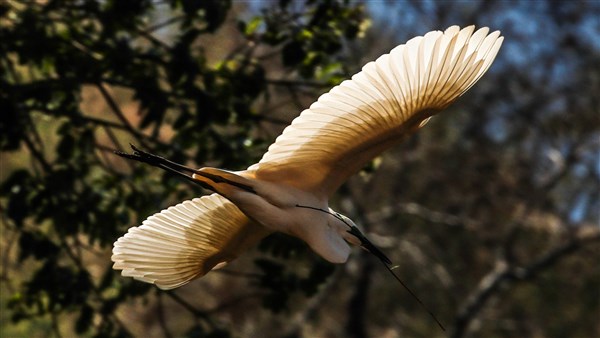 |
Day 11 - Tsangajoly - Baobab Alley-MorondavaThe Lodge of La Saline has several ornithological trails.On these you can observe the Humblot's heron, the widowed dendrocygne, the teal and flamingos.Also yellow-billed kites , green-backed herons, white egrets, gray herons and white stilts will be scattered on your walks.The facility also has a swimming pool, a pool table and other amenities to relax a little and breathe between two walks. In the middle of the afternoon we will go to Morondava, places we will reach after 2h30 drive.We will see the sunset at the mythical avenue of baobabs. Also here we will stay a few moments after the sunset to immortalize the place under the stars.We will be back on the road for 30 minutes and then arrive at Kimony Resort. |
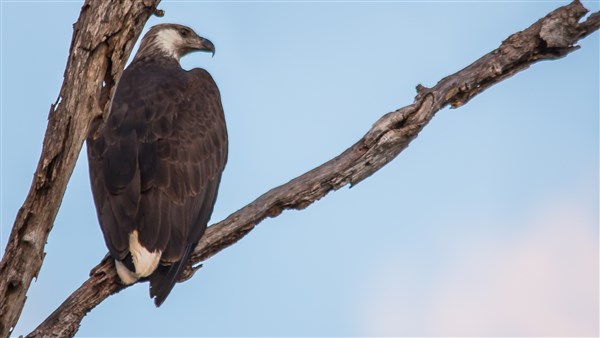 |
Day 12- Morondava to AntananarivoA peaceful rest day in the town of Morondava before the afternoon flight to Tana. Later evening free and dinner at Villa Sibylle. |
 |
Day 13- Antsirabe to AndasibeAfter breakfast, departure on the RN2 that connects Tana with Tamatave, heading east to Andasibe National Park.To do this, we must cross Antananarivo, an anthill in the open air. A few kilometers from the exit of the city, the landscapes will already change.First, the eucalyptus forests for charcoal, which will give way to a forest increasingly green and lush. We will arrive at our destination for lunch.Before dinner we will take a night walk through the park to look for chameleons, insects, reptiles, but especially the mouse lemur, a small nocturnal lemur that weighs about 25 grams and is spotted thanks to its eyes that reflect the light of flashlights. Return to the hotel Eulophiella Lodge and dinner. |
 |
Day 14-Andasibe / Mitsinjo National ParkAfter breakfast we will head towards Andasibe National Park for bird watching. We will stop at the Mangoro River where we will look for the Madagascar Pratincole. Afterwards, we will keep an eye out for the following birds in Mitsinjo Reserve: Red-breasted Coua, Collared Nightjar and Crested Coua.We will also look for Indri, the largest lemurs of Madagascar, also found in this forest. Before dinner, we will take a guided night walk to look for Long-eared Owl, Madagascar Scops Owl, Goodman's Mouse Lemur, Pygmy Lemur and Eastern Woolly Lemur. Various species of chameleon and tree frog can also be seen.Night walks in the rainforest are possible from the lodge.Overnight at the hotel " Eulophiella Lodge ". |
 |
Day 15-Andasibe to AntananarivoIn the morning there would be another area of Andasibe N.P. to explore but you can also already drive comfortably in the direction of Antananarivo. On the way there are still some possibilities to visit which will be proposed depending on the interest of the participants on the spot.Overnight stay in the "Villa Sibylle". |
 |
Day 16-Antananarivo and SurroundingsOn the last day of your exciting journey through Madagascar the capital of the island state is once again on the program: In Antananarivo, you will have numerous opportunities to go on Discovery tour To finish the birding, on the way to the Tsarasaotra Private Park in Antananarivo itself and the visit to this Ramsar site, which is a refuge and breeding ground for freshwater birds in general, other bird species, endemic and endangered bird species could be seen.For this day we have a Day Use in the Villa Sybille so that you can store your luggage there and freshen up in the evening, if necessary, before we take you to the airport. |
 |
Day 17-The Return flight to EuropeThe last day of your 17 days vacation in Madagascar is entirely devoted to the return journey. This day you will on the plane to Europe and presumably learn about the different experiences and impressions of their Journey through Madagascar dream |
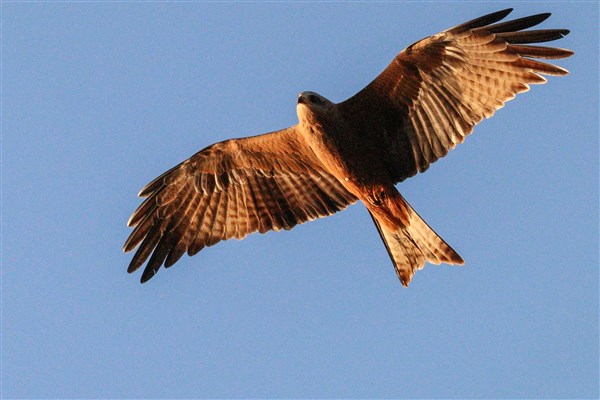 |
List of Bird species in AndasibeAccipiter francesii, Accipiter henstii, Accipiter madagascarriensis, Acridorheres tristis, Acrcephalus newtoni, Alcedo vintsioides, Alectroenas madagascariensis, Anas meleri, Apus melba, Ardea humbloti, Ardea purpurea, Ardeola idea, Ardeola ralloides, Asio madagascariensis, Atelornis crossleyi, Atelornis pittoides, Aviceda madagascariensis, Brachypteracias leptosomus, Bubulcus ibis, Buteo brachypterus, Butorides striatus, Calicalius madagascariensis, Canirallus, Caprimulgus enarratus, Caprimulgus madagascariensis, Casmerodius Albus, Centrpus toulou, Cisticola cherina, Copsychus albospecularis, Coracina cinerea, Coracopsis nigra, Coracopsis vasa, Corvus albus, Coua Caerulea, Coua cristata, Coua reynaudi, Cuculus rochii, Cyanolanius madagascariensis, Cypsiurus parvus, Dicrurus forficatus, Dromaeocercus brunneus, Dryolimnas cuvieri, Euryceros prevostii, Eurystomus glaucurus, Eutriorchis astur, Falco concolor, Falco eleonorae, Falco newton, Falco zoniventris, Foudia madagascariensis, Foudia omissa, Gallinago macrodactyla, Gallinula chlorupus, Glareola ocularis, Hartertula flavoviridis, Hartlaubius auratus, Hypossita Corallirostris, Hypsipetes madagascariensis, Ispidina madagascariensis, Leptopterus chabert, Leptopterus virdis, Leptosomus Discolor, Lonchura nana, Lophotibis cristata, Margaropedrix madagascariensis, Merops superciliosus, Mesitornis unicolor, Milvus Migrans, Motacilla flaviventris, Mystacornis crossleyi, Nectarinia notata, Nectarinia souimanga, Neodrepanis coruscans, Neodrepanis hypoxanthus, Neomixis striatigula, Neomixis tenella, Neoximis viridis, Nesillas typica, Newtonia amphishroa, Newtonia brunneicauda, Numida meleagris, Otis rutilus, Oxylabes madagascariensis inexpectatus, Phalacrocorax africanus, Phedina borbonica, Philepitta castanea, Phyllastrephus madagascariensis, Phyllastrephus tenebrosus, Phyllastrephus zosterops, Ploceus nelicouvri, Polyboroides radiates, Pseudopias wardi, Pseudocossyphus Sharpei, Randia pseudozosterops, Riparia paludicola, Sarothura insularis, Sarothrura watersi, Saxicola torquata, Schetba rufa, Scopus umbretta, Streptopelia picturata, Tachybaptus pelzelnii, Terpsiphone mutate, Trenon Australia, Tylas eduardi, Tyto alba, Tyto soumagnei, Vanga curvirostris, Xenopirostris polleni, Zoonavena grandidieri, Zosterops maderaspatana |
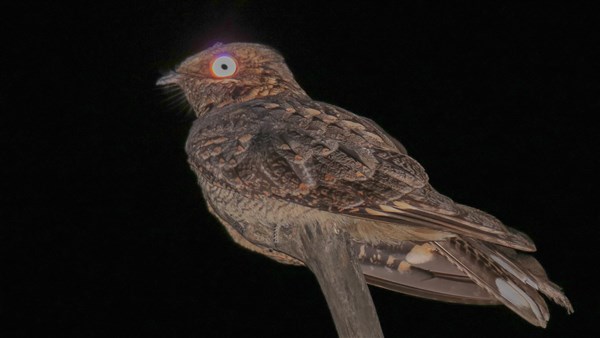 |
List of Bird species in AnkarafantsikaAnatidae : Nettapus auritus, Podicipedidae : Tachybaptus pelzelnii, Mesitornithidae : Mesitornis variegatus, Columbidae: Nesoenas picturatus, Oena capensis, Caprimulgidae : Caprimulgus, madagascariensis, Cuculidae : Coua coquereli, Coua ruficeps, Coua cristata, Centropus toulou, Cuculus rochii, Rallidae : Mentocrex kioloides, Dryolimnas cuvieri, Porphyrio alleni, Threskiornithidae : Plegadis falcinellus, Lophotibis cristata, Ardeidae : Butorides striata, Ardeola ralloides, Ardeola idae, Bubulcus ibis, Ardea humbloti, Ardea purpurea, Ardea alba, Egretta ardesiaca, Egretta gularis, Anhingidae : Anhinga rufa, Charadriidae : Charadrius bifrontatus, Jacanidae : Actophilornis albinucha, Turnicidae: Turnix nigricollis, Tytonidae: Tyto alba, Strigidae: Athena superciliaris, Otus rutilus, Accipitridae: Polyboroides radiatus, Accipiter francesiae, Haliaeetus vociferoides, Buteo brachypterus, Leptosomidae : Leptosomus discolor, Upupidae:Upupa marginata, Meropidae: Merops superciliosus, Coraciidae: Eurystomus glaucurus, Alcedinidae: Corythornis madagascariensis, Corythornis vintsioides, Falconidae: Falco newtoni, Falco zoniventris, Falco peregrinus, Psittacidae : Coracopsis vasa, Coracopsis nigra, Agapornis canus, Philepittidae: Philepitta castanea, Philepitta schlegeli, Campephagidae: Ceblepyris cinereus, Vangidae: Newtonia brunneicauda, Newtonia brunneicauda, Cyanolanius madagascarinus, Vanga curvirostris, Schetba rufa, Xenopirostris damii, Falculea palliata, Artamella viridis, Dicruridae : Dicrurus forficatus, Monarchidae: Terpsiphone mutata, Alaudidae: Eremopterix hova, Cisticolidae: Neomixis tenella, Cisticola cherina, Acrocephalidae: Acrocephalus newtoni, Bernieridae: Bernieria madagascariensis, Hirundinidae: Phedina borbonica, Pycnonotidae: Hypsipetes madagascariensis, Zosteropidae: Zosterops maderaspatanus, Muscicapidae: Copsychus pica, Copsychus albospecularis, Saxicola torquatus, Nectariniidae: Cinnyris notatus, Cinnyris sovimanga , Ploceidae : Ploceus sakalava, Estrildidae : Lepidopygia nana, Motacillidae : Motacilla flaviventris |
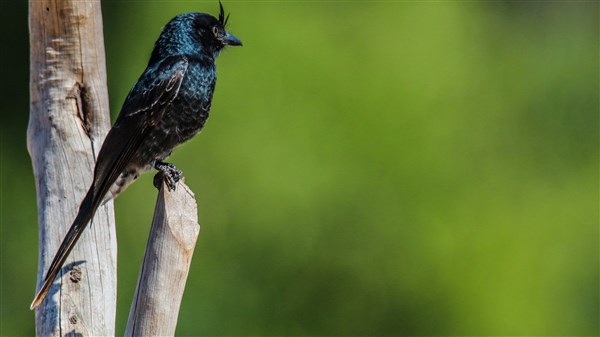 |
The above presented ornithological journey is basically for a Flexible number of people bookable and will be organized by us very gladly with consideration of your special preferences. Below we offer you, on the one hand, a clear price list, from which you can Cost of the trip per person without any flight transfers can take from it. In addition, we list below the table once again all the services that you can expect during your trip. Should you be interested in this ornithological journey through Madagascar have interest or additional information about the itinerary as well as the Birds to be observed on the island we will be happy to assist you with our knowledge.
| Ornithological trip - 17 Days | Price per person |
| 2 to 3 guests | 3550 € |
| 4 guests | 3490 € |
| 5 to 8 guests | 3350 € |
| 9 to 12 guests | 3250 € |
| 12 guests and more | 3190 € |
For single rooms we have to charge a supplement of 690,00 Euro.
Services included in the basic price:
Off-road vehicle including diesel and driver
Accommodation (as indicated)
Breakfast (as indicated)
Entrance to the listed national parks
Costs for meals and accommodation of the accompanying person
Car insurance and taxes
Transfers
Services not included in the basic price:
Tips
Payment of the local guides in the national parks
Drinks
Airline tickets
Lunch and dinner
Individual activities
Personal expenses
Use our contact form to reach us directly! We guarantee a quick response and look forward to dealing with your individual requests and inquiries. Your dream vacation in Madagascar is just a message away. Don't hesitate - we are here for you!
Contact us - we will help you quickly and reliably with all your questions!
I guarantee you that all donations to 100% will reach the people. Kind regards Klaus
Thank you for thinking about donating to the poorest. Maybe you will come back here again.
I guarantee you that all donations to 100% will reach the people. Kind regards Klaus
Do you have any questions? Simply get in touch with us! Please use the contact form on the right. We will take care of your request as soon as possible.
Do you have any questions? Just get in touch with us!
Do you have any questions? Simply get in touch with us! Please use the contact form on the right. We will take care of your request as soon as possible.
![]() Villa Sibylle Antananarivo (Madagascar)
Villa Sibylle Antananarivo (Madagascar)